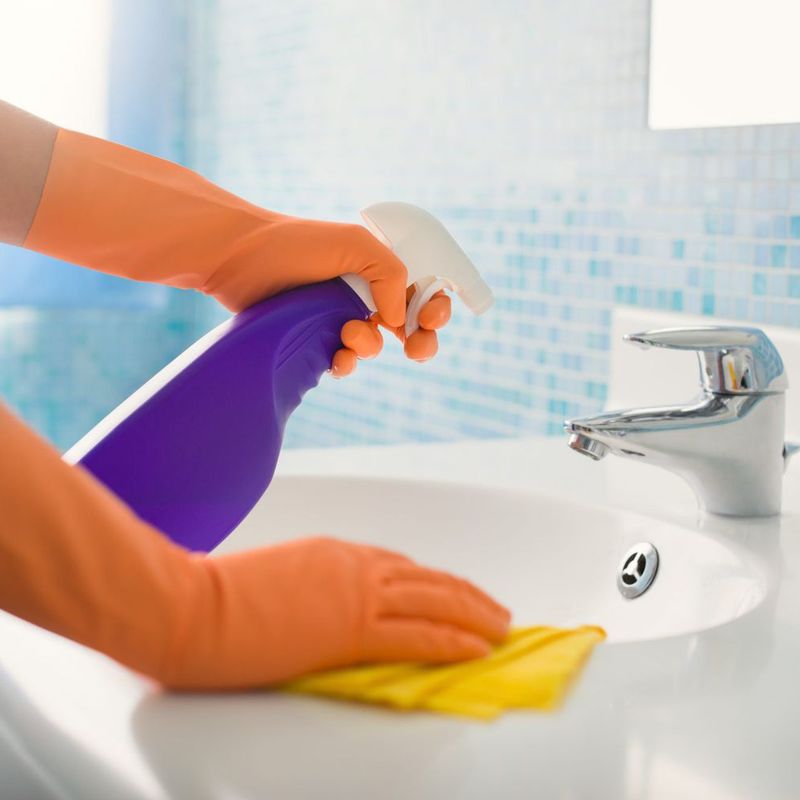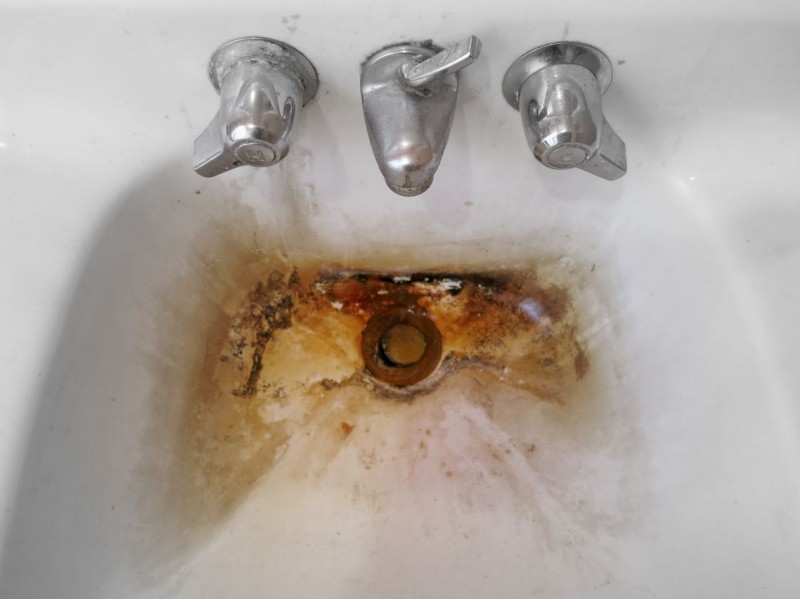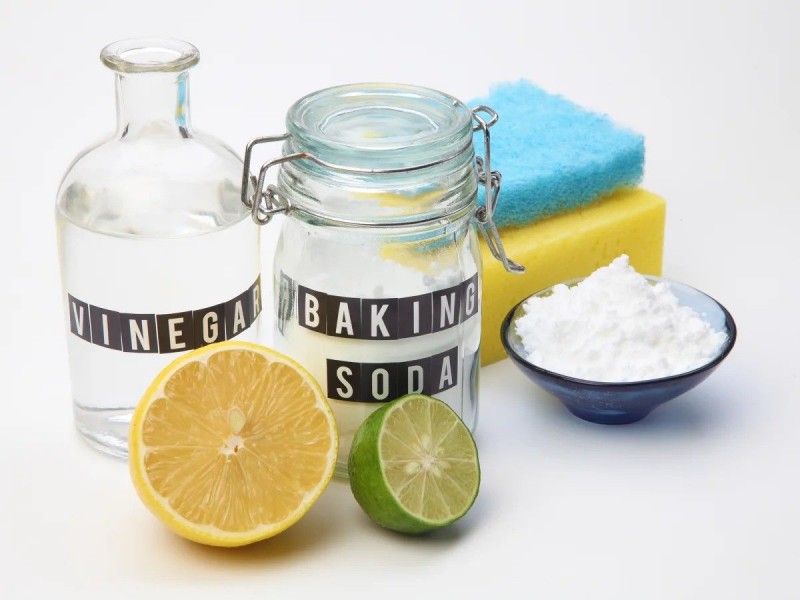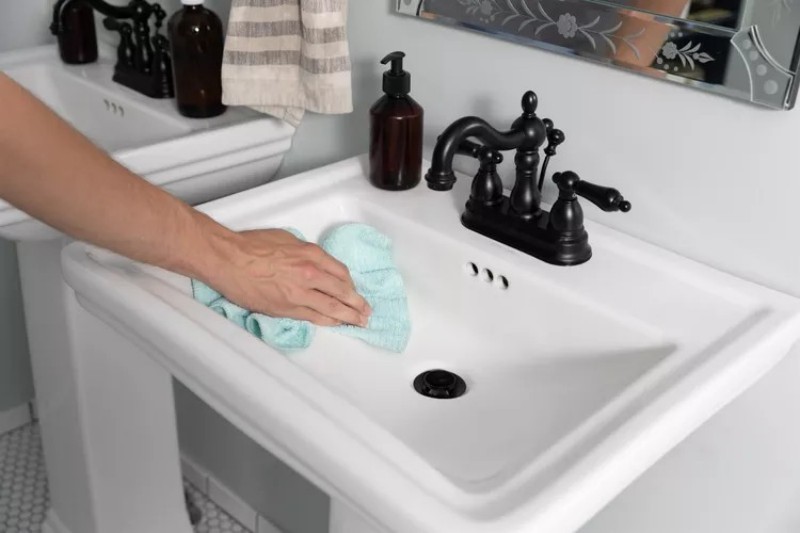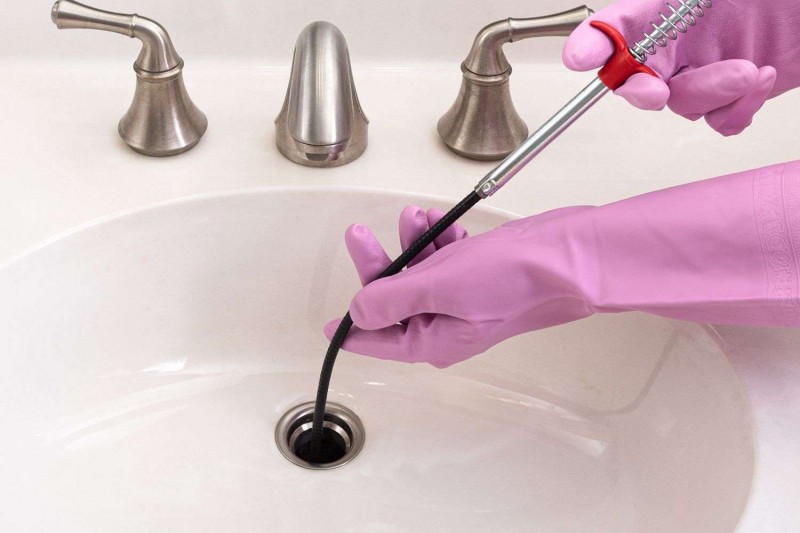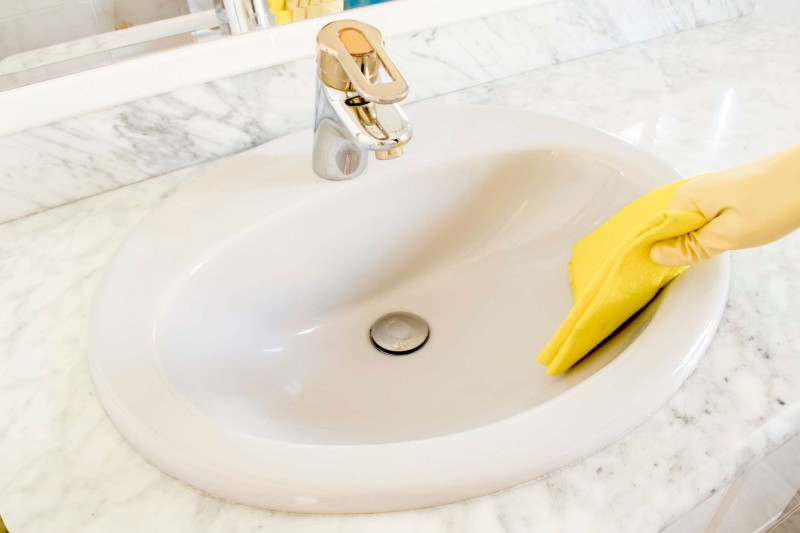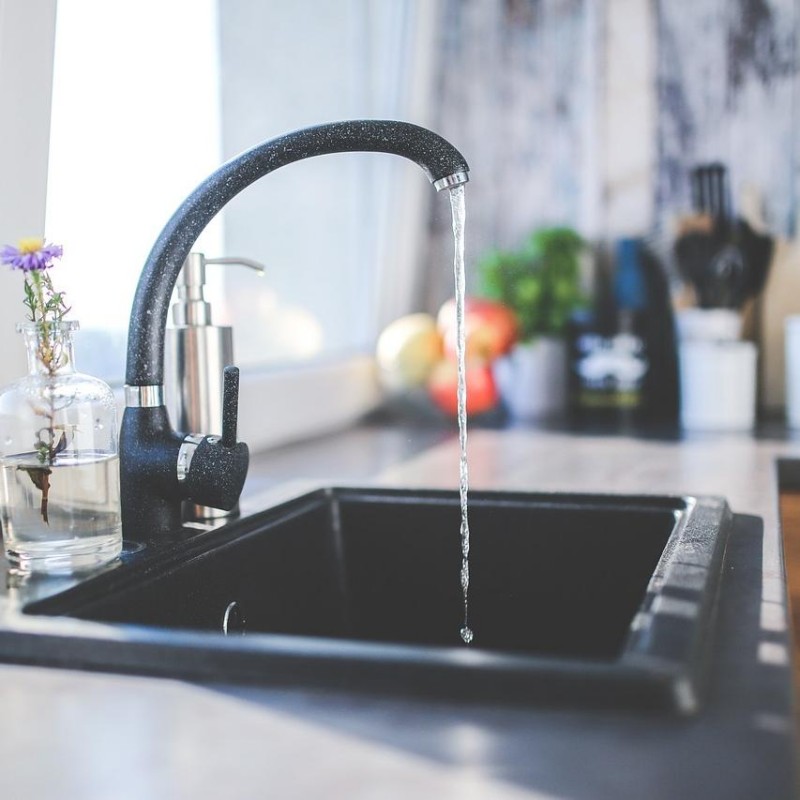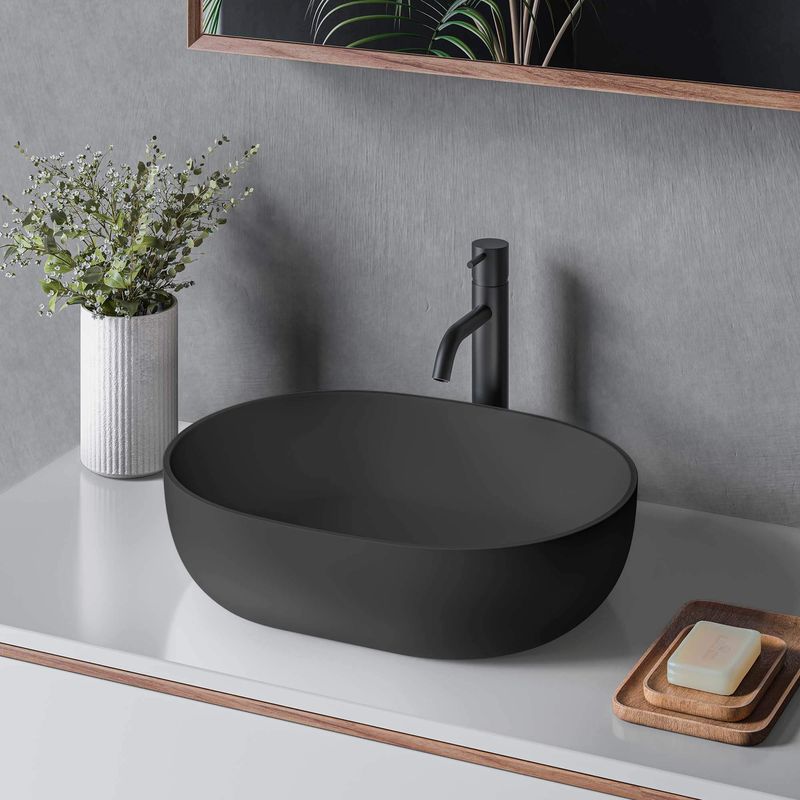 English
English
Jabra Sanitary is a sanitaryware supplier offering toilets, sinks, faucets, bathtubs, etc., at competitive prices. If you're a distributor, wholesaler, or project contractor, get a quote today!
 $23.9 Limited-time Offer
$23.9 Limited-time Offer Consignment Policy
Consignment Policy 20 Years of Experience
20 Years of Experience
Keeping your bathroom sink clean is essential for both hygiene and aesthetics. According to the U.S. Geological Survey, about 85% of the U.S. has hard water, which means that the water coming from your faucet likely contains minerals that can leave stains.
While hard water isn't harmful, it can make your sink look dirty if left unattended. In this article, we'll explore effective methods to clean bathroom sinks, remove remove stain from bathroom sink, and prevent future buildup.
Table of Contents
What Causes Bathroom Sink Stains
The Best Bathroom Sink Cleaners
How to Remove Stain From a Bathroom Sink?
Best Way to Clean a Bathroom Sink
How to Clean a Stained Ceramic or Porcelain Sink: The Steps
How to Clean the Sink Faucet
How to Clean a Sink Drain Stopper
How to Prevent Hard Water Stains
FAQs
Conclusion
What Causes Bathroom Sink Stains
Bathroom sink stains can be caused by various factors, from mineral-rich hard water to mold buildup. Understanding the causes of these stains will help in choosing the best way to clean bathroom sink surfaces effectively.
Hard Water Stains
Hard water contains high levels of minerals, primarily calcium and magnesium. When hard water dries on sink surfaces, it leaves white, chalky residues known as limescale.
These stains are often seen around faucets, drains, and other water fixtures and make cleaning bathroom sink buildup challenging.
Reddish Stains
Reddish stains in your sink are usually caused by iron in the water. When iron oxidizes upon exposure to air, it creates rust-colored stains that can be stubborn to remove.
These stains are common in areas with iron-rich water supplies, making the best cleaner for porcelain sinks a valuable tool in maintenance.
Black Stains
Black stains are often caused by mold, mildew, or metal buildup. They appear when moisture is left unattended, creating a breeding ground for bacteria or fungal growth.
These stains require prompt cleaning to prevent health hazards and odor buildup in a dirty bathroom sink.
The Best Bathroom Sink Cleaners
While many people rely on bleach-based cleaners, these products aren't always effective against all types of stains.
Here's a look at the best sink cleaners and what to use to clean bathroom sink stains:
Lemon Juice
Lemon juice is a natural cleaner that can help break down limescale and other hard water stains. It's especially effective on lighter stains and leaves a fresh scent.
Baking Soda, Salt, and Vinegar
A combination of baking soda, salt, and vinegar can tackle tougher stains. The abrasive nature of baking soda and salt helps scrub away deposits, while vinegar dissolves mineral buildup, making this a great stain remover for sink maintenance.
Lye-Based Cleaners
Lye-based cleaners are powerful and can effectively remove stubborn stains, including rust and mineral buildup. However, use them with caution, as they can be harsh on certain sink materials, especially when cleaning bathroom sink drain traps.
Bleach
Bleach can be used to remove mildew and disinfect the sink. It's best suited for white sinks but should be used sparingly to avoid damaging the finish.
Enzyme-Based Cleaners
Enzyme-based cleaners break down organic material and are excellent for removing mold and mildew, particularly effective for how to get rid of mold in sink drain. They're safer for various sink materials and less likely to damage surfaces.
Hydrogen Peroxide
Hydrogen peroxide is a versatile cleaner that helps to remove mold, mildew, and light stains. It's effective when combined with baking soda to form a paste for stubborn spots and acts as a gentle cleaner for porcelain sinks.
Cream of Tartar
Cream of tartar is a mild abrasive that works well on porcelain sinks. It's best used with hydrogen peroxide to create a paste for effective stain removal from porcelain sink surfaces.
Pumice
Pumice stones or pumice-based cleaning pads can be used for scrubbing stains on hard surfaces like porcelain or ceramic. Use them gently to avoid scratching the surface, as pumice is often considered the best cleaner for porcelain sinks.
Shaw's Pads
Shaw's Pads are non-abrasive cleaning pads designed for a variety of surfaces, including bathroom sinks. They're effective for removing stains without causing damage, making them ideal for cleaning a bathroom sink drain and surface.
How to Remove Stain From a Bathroom Sink?
Removing stains from a bathroom sink requires the right approach and materials. Here's a step-by-step guide on how to remove stains from sink surfaces effectively:
Wipe and Rinse
Begin by wiping down the sink to remove loose debris. Use a damp sponge or cloth to rinse off surface grime. This step makes it easier for the cleaning agents to penetrate the stains.
Apply Cleaner
Apply the chosen cleaner directly to the stained areas. For natural cleaners like baking soda and vinegar, create a paste and spread it over the stains.
For commercial cleaners, follow the manufacturer's instructions for application on bathroom sink stains.
Take a Break
Allow the cleaner to sit on the stains for 10-15 minutes. This waiting period lets the cleaner break down mineral deposits, making them easier to scrub away.
Scrub, Scrub, Scrub
Using a non-abrasive sponge or brush, scrub the stained areas. For tough stains, use a pumice pad or cream of tartar paste, but be gentle to avoid scratching the sink's surface, especially when learning how to clean a stained ceramic sink.
Rinse and Disinfect
Rinse the sink thoroughly with water to remove any residue. For added cleanliness, use a disinfectant spray to kill any remaining bacteria or mold spores, ensuring no bathroom sink stains linger.
Best Way to Clean a Bathroom Sink
Cleaning your bathroom sink effectively depends on its material. Here's how to approach different types of sinks:
Ceramic or Porcelain Sinks
These sinks are common and relatively durable, but they can be scratched by abrasive cleaners. Use mild cleaning agents like baking soda, vinegar, or non-abrasive commercial cleaners.
Avoid scouring pads and stiff-bristled brushes to maintain the sink's finish and prevent scratching.
Natural Stone Sinks
Natural stone sinks require special care. Use only mild dish soap or stone-specific cleaners, as acidic cleaners like vinegar or citrus-based products can damage the stone.
Rinse with water and wipe dry to prevent water spots from forming, which helps maintain a clean bathroom sink surface.
Metal Sinks (Stainless Steel, Copper)
Metal sinks need gentle cleaning to prevent scratches. Use mild dish detergent and a soft cloth or sponge.
For stainless steel sinks, avoid using abrasive tools or cleaners that might scratch the surface. For copper sinks, be extra cautious, as copper is a soft metal that's easily scratched.
Quartz Sinks
Quartz sinks are durable and less porous than other natural materials.
Use non-abrasive cleaners and avoid letting acidic substances, like vinegar or citrus cleaners, sit on the surface for extended periods. Rinse thoroughly and dry to prevent water spots.
How to Clean a Ceramic or Porcelain Sink: The Steps
If your ceramic sink has deep stains, follow these steps to restore its cleanliness:
Fill the Sink and Add Cleaning Solution
Fill the sink with warm water and add a cleaning solution like baking soda or mild dish soap. Let it sit for a few minutes to loosen the stains before cleaning a bathroom sink buildup.
Scrub the Sink and Countertop
Use a soft sponge or cloth to scrub the sink and surrounding areas. Focus on stained spots, using a paste of cream of tartar and hydrogen peroxide for stubborn marks.
Drain and Dry
Drain the sink and wipe it down with a dry cloth to remove moisture. Pay attention to corners and edges where water can accumulate.
Disinfect the Sink
Apply a disinfectant spray to kill bacteria and mold, especially around the drain and faucet. Let it sit for a few minutes, then rinse with water and dry thoroughly.
How to Clean the Sink Faucet
The bathroom faucet can accumulate grime, water spots, and mineral buildup. Here's how to keep it clean and shiny:
Wash the Faucet
Start by washing the faucet with warm soapy water. Use a soft cloth or sponge to wipe away surface dirt. Pay attention to the base and handles, where dirt often accumulates.
Remove Any Buildup
For mineral deposits or hard water stains, use a vinegar-soaked cloth to cover the affected areas. Let it sit for 5-10 minutes, then gently scrub with a toothbrush.
Rinse the faucet and dry it with a soft towel to prevent water spots.
How to Clean a Sink Drain Stopper
The stopper and drain are often overlooked but require regular cleaning to prevent clogs and odors. Here's how to clean them effectively:
Remove the Stopper
First, remove the sink stopper by unscrewing it or lifting it out. This will give you access to the drain for a more thorough cleaning and prevent buildup of bathroom sink stains.
Clear Debris from the Drain
Use a drain cleaning brush or a bent wire hanger to remove hair, soap scum, and other debris from the drain. Collect the debris and discard it in a trash bin to avoid clogging the pipes.
Rinse and Maintain
After clearing the drain, run hot water for a minute to flush any remaining debris. To prevent odors, pour 1/2 cup of baking soda followed by 1 cup of vinegar down the drain.
After it bubbles, rinse with warm water. Regular cleaning keeps the drain clear and odor-free.
How to Prevent Hard Water Stains
Preventing hard water stains is easier than removing them. Here are some practical tips to keep your sink stain-free:
Wipe Surfaces Dry After Use
After using the sink, wipe the surfaces dry with a soft cloth. This prevents hard water minerals from drying on the surface and leaving behind chalky residues.
Frequent Cleaning
Rinse and wipe your sink daily to remove soap scum and other residues. This routine cleaning helps prevent stains from forming over time.
Daily Use of Disinfectant Spray
Spray the sink with a disinfectant cleaner after each use. This keeps bacteria and mold from growing and makes it easier to maintain the sink's cleanliness.
Install a Water Softener
A water softener can help reduce hard water deposits by removing excess minerals. This prevents limescale buildup and makes cleaning easier.
Use Sink Protectors and Surface Polish
Place a soft rubber mat in the sink to protect the surface from metal objects. For extra protection, use a surface polish to maintain the finish.
Avoid Metal Object Contact
Keep shaving creams, air fresheners, and razors in a cabinet, as they can cause rust stains. Metal objects can also scratch and damage sink surfaces, leading to further staining.
Install a Water Filtration System
A water filtration system removes impurities from the water, reducing the risk of brown or red stains in the sink.
Fix Plumbing Leaks
Leaky faucets or pipes can cause excess moisture, leading to mineral deposits, mold, and mildew. Regularly inspect plumbing and fix any leaks to prevent water damage and staining.
FAQs
Can hydrogen peroxide clean a sink?
Yes, hydrogen peroxide is an effective cleaner for bathroom sinks. It helps remove light stains, disinfect surfaces, and break down mold or mildew.
For stubborn stains, mix it with baking soda to form a paste and scrub gently.
Why does my tap water leave brown stains?
Brown stains are typically caused by iron in the water. When iron reacts with oxygen, it creates rust-colored deposits that settle on sink surfaces.
A water filtration system or a water softener can help reduce iron content.
How often do drains need to be cleaned?
It's best to clean bathroom sink drains every 2-4 weeks to prevent clogs and unpleasant odors. Regular maintenance, like using a drain cleaning brush or a mix of baking soda and vinegar, keeps drains clear and functional.
Is it safe to use bleach to clean drains?
Bleach can be used to disinfect drains, but it should be used sparingly. Excessive bleach can damage pipes and create toxic fumes when combined with other chemicals.
Opt for safer alternatives like enzyme-based cleaners or vinegar.
How to stop a bathroom sink from smelling?
To eliminate odors, pour 1/2 cup of baking soda down the drain, followed by 1 cup of heated vinegar. Let it bubble for a few minutes, then flush with hot water.
Regular drain cleaning and disinfecting can prevent smells from recurring.
Conclusion
Cleaning your bathroom sink is straightforward when you know the right techniques and cleaners. Regular maintenance, such as wiping surfaces dry and using natural or commercial cleaners, can prevent stains and keep your sink looking new.
Whether your sink is ceramic, metal, or stone, the cleaning tips outlined here can help you maintain a sparkling and hygienic bathroom sink.







